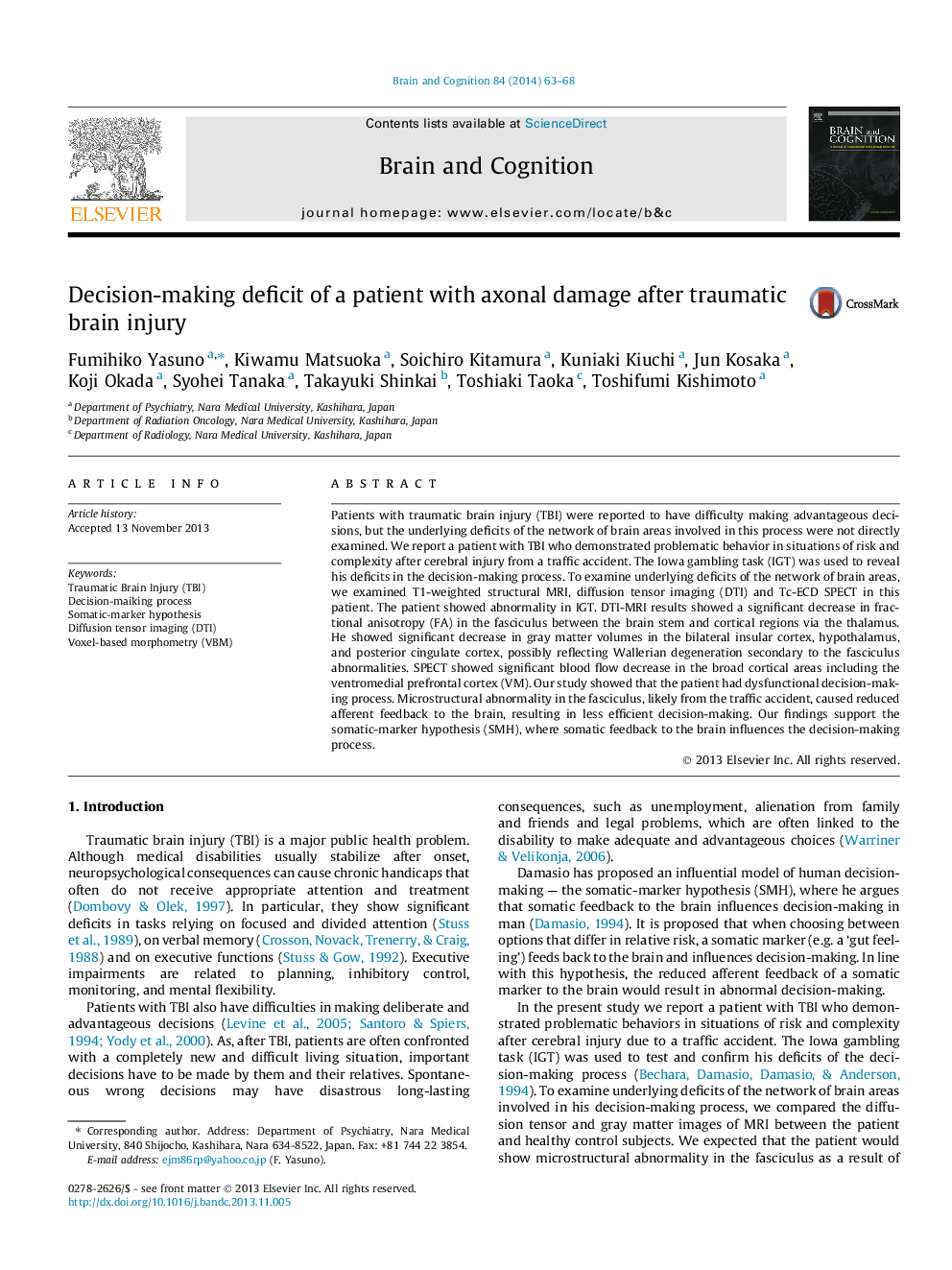| Article ID | Journal | Published Year | Pages | File Type |
|---|---|---|---|---|
| 10455563 | Brain and Cognition | 2014 | 6 Pages |
Abstract
Patients with traumatic brain injury (TBI) were reported to have difficulty making advantageous decisions, but the underlying deficits of the network of brain areas involved in this process were not directly examined. We report a patient with TBI who demonstrated problematic behavior in situations of risk and complexity after cerebral injury from a traffic accident. The Iowa gambling task (IGT) was used to reveal his deficits in the decision-making process. To examine underlying deficits of the network of brain areas, we examined T1-weighted structural MRI, diffusion tensor imaging (DTI) and Tc-ECD SPECT in this patient. The patient showed abnormality in IGT. DTI-MRI results showed a significant decrease in fractional anisotropy (FA) in the fasciculus between the brain stem and cortical regions via the thalamus. He showed significant decrease in gray matter volumes in the bilateral insular cortex, hypothalamus, and posterior cingulate cortex, possibly reflecting Wallerian degeneration secondary to the fasciculus abnormalities. SPECT showed significant blood flow decrease in the broad cortical areas including the ventromedial prefrontal cortex (VM). Our study showed that the patient had dysfunctional decision-making process. Microstructural abnormality in the fasciculus, likely from the traffic accident, caused reduced afferent feedback to the brain, resulting in less efficient decision-making. Our findings support the somatic-marker hypothesis (SMH), where somatic feedback to the brain influences the decision-making process.
Related Topics
Life Sciences
Neuroscience
Cognitive Neuroscience
Authors
Fumihiko Yasuno, Kiwamu Matsuoka, Soichiro Kitamura, Kuniaki Kiuchi, Jun Kosaka, Koji Okada, Syohei Tanaka, Takayuki Shinkai, Toshiaki Taoka, Toshifumi Kishimoto,
